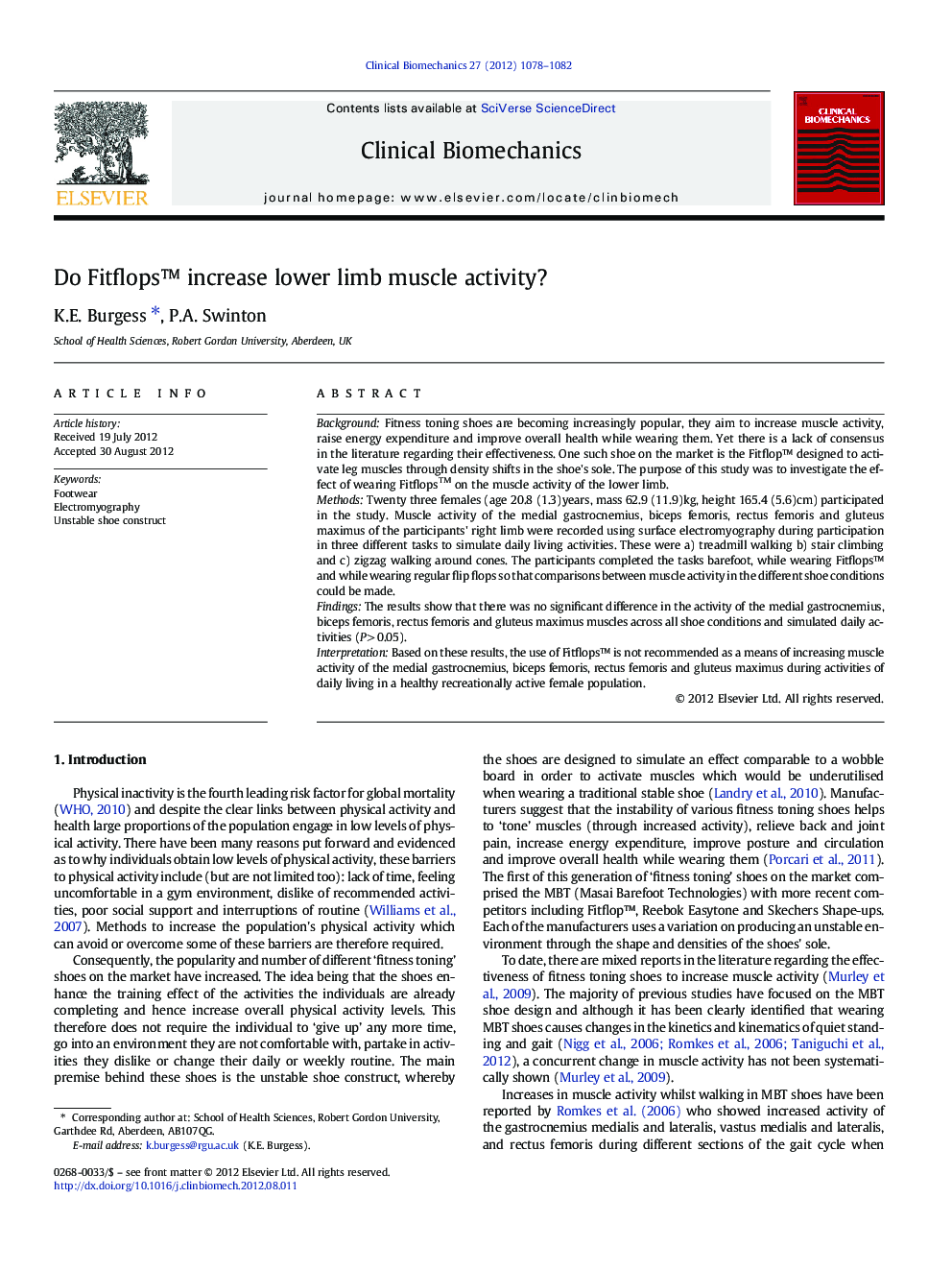| Article ID | Journal | Published Year | Pages | File Type |
|---|---|---|---|---|
| 6204927 | Clinical Biomechanics | 2012 | 5 Pages |
BackgroundFitness toning shoes are becoming increasingly popular, they aim to increase muscle activity, raise energy expenditure and improve overall health while wearing them. Yet there is a lack of consensus in the literature regarding their effectiveness. One such shoe on the market is the Fitflop⢠designed to activate leg muscles through density shifts in the shoe's sole. The purpose of this study was to investigate the effect of wearing FitflopsTM on the muscle activity of the lower limb.MethodsTwenty three females (age 20.8 (1.3)years, mass 62.9 (11.9)kg, height 165.4 (5.6)cm) participated in the study. Muscle activity of the medial gastrocnemius, biceps femoris, rectus femoris and gluteus maximus of the participants' right limb were recorded using surface electromyography during participation in three different tasks to simulate daily living activities. These were a) treadmill walking b) stair climbing and c) zigzag walking around cones. The participants completed the tasks barefoot, while wearing Fitflops⢠and while wearing regular flip flops so that comparisons between muscle activity in the different shoe conditions could be made.FindingsThe results show that there was no significant difference in the activity of the medial gastrocnemius, biceps femoris, rectus femoris and gluteus maximus muscles across all shoe conditions and simulated daily activities (P > 0.05).InterpretationBased on these results, the use of Fitflops⢠is not recommended as a means of increasing muscle activity of the medial gastrocnemius, biceps femoris, rectus femoris and gluteus maximus during activities of daily living in a healthy recreationally active female population.
